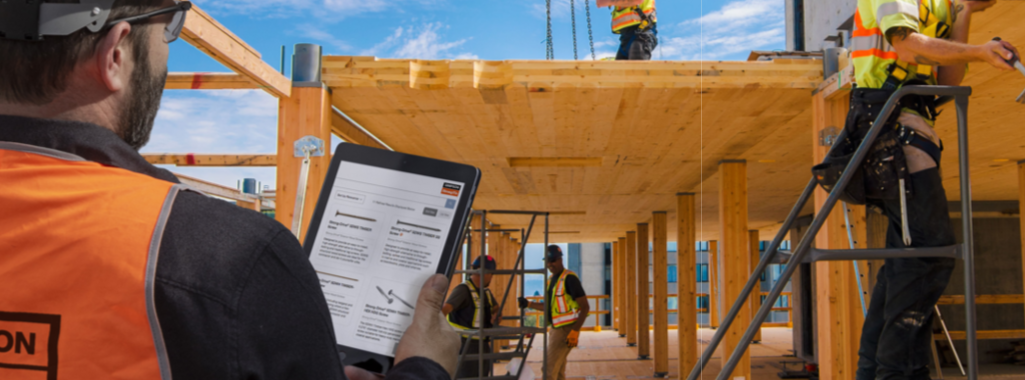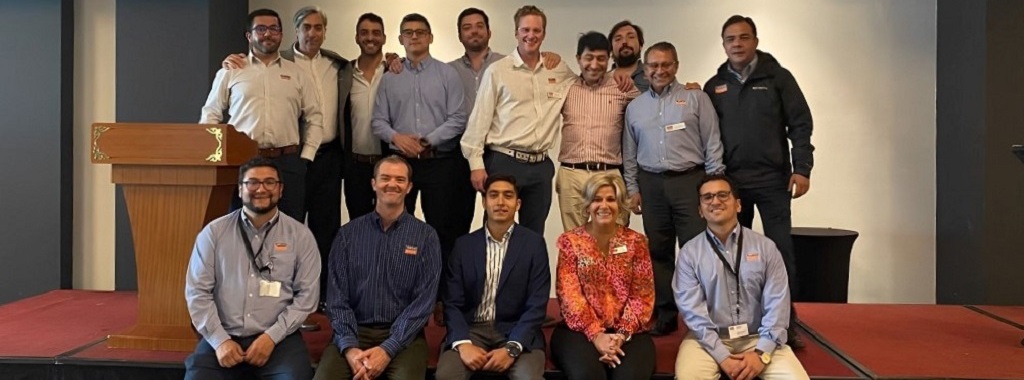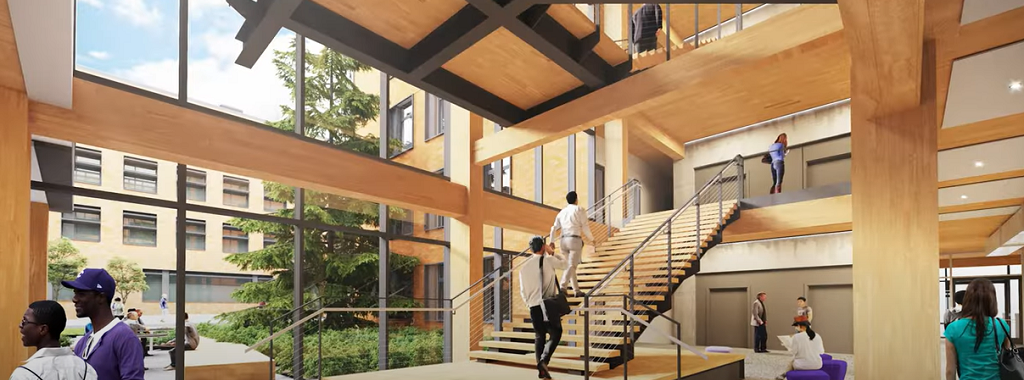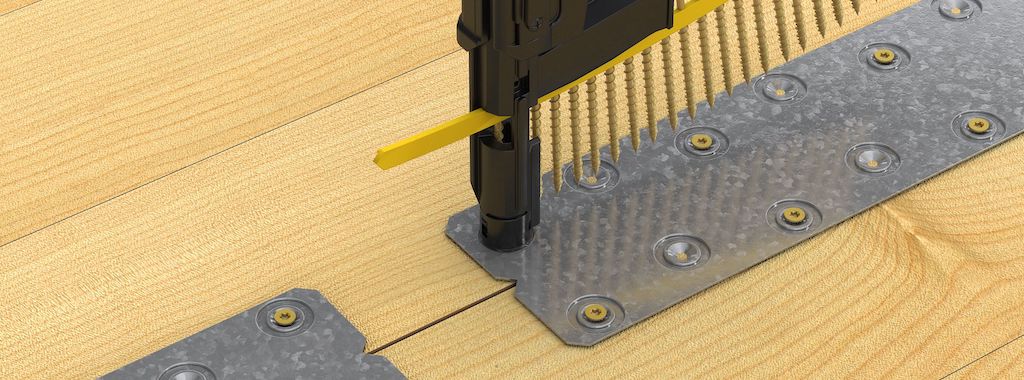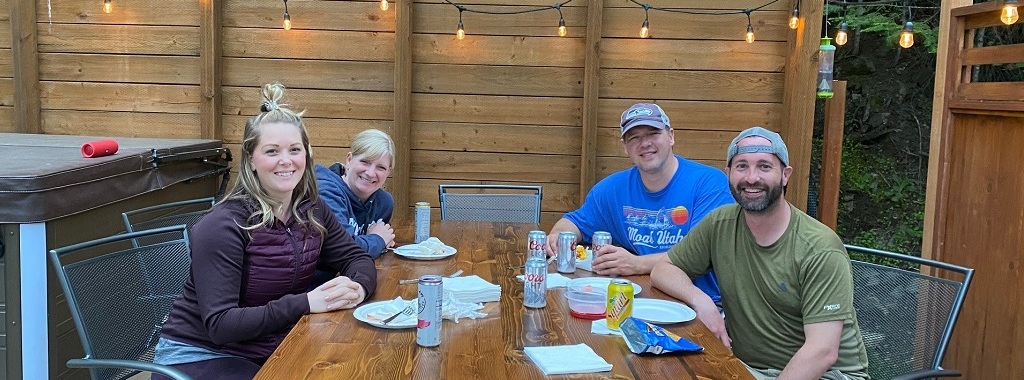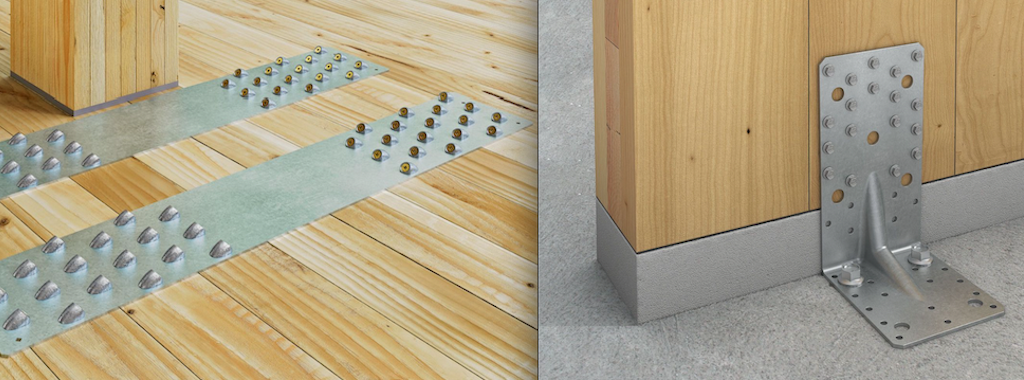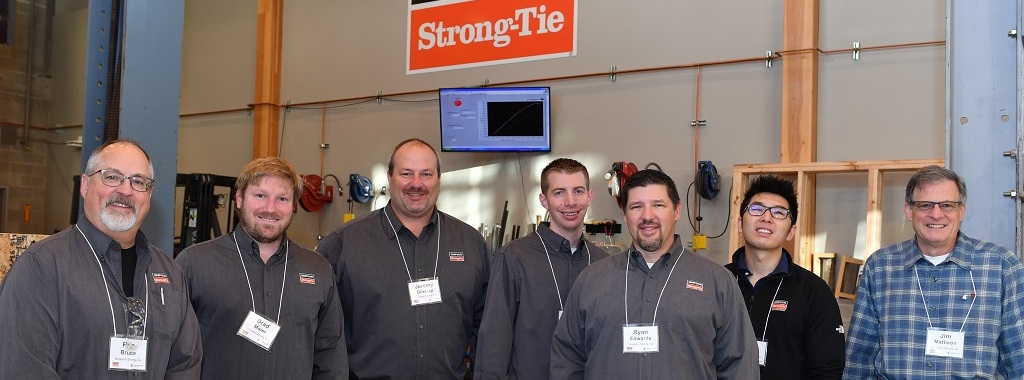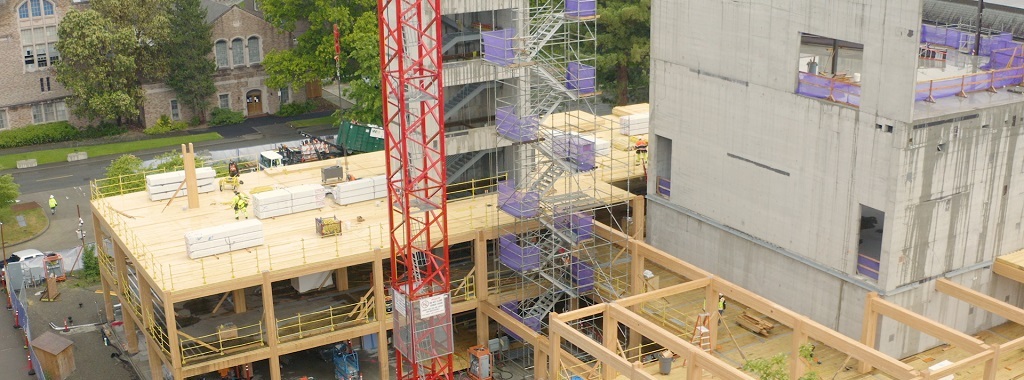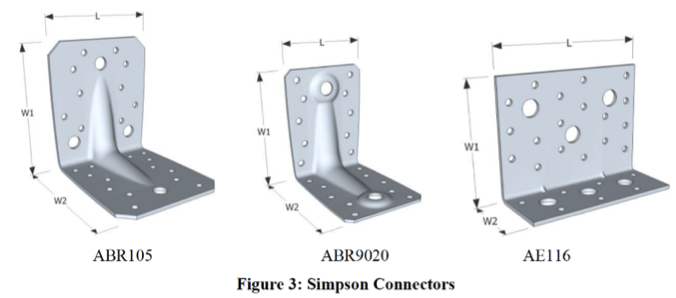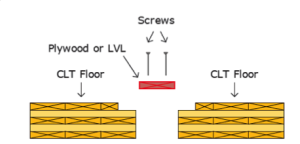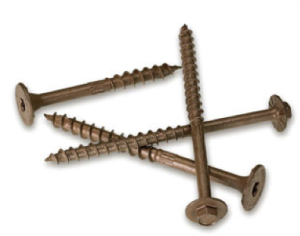Simpson Strong-Tie is proud to announce that one of our product engineers, Bonnie Yang, Ph.D., P.E., CFS, has been invited to give a public lecture on mass timber connections. The date of her lecture will be March 3 at 11 a.m. PST. Yang’s lecture will be part of a Mass Timber mini-lecture series hosted by the School of Architecture at Mississippi State University in partnership with the Mississippi Forestry Association.
Tag: mass timber
Simpson Strong-Tie in Latin America: Our 2022 Chile Seminar
Our Director of International Sales in Latin America, Cyndi Chandler, organized our annual sales seminar in Chile. This was a great opportunity to connect with our engineers and specifiers in Latin America and educate them about the various products and resources we offer. Learn more about this dynamic two-day seminar and the products we demonstrated in Chile.
Mass Timber Case Study: University of Washington’s Founders Hall
The University of Washington’s Foster School of Business is adding a mass timber building to its campus. Founders Hall is made of glulam columns and beams that support five-ply cross-laminated timber (CLT) panels.Continue Reading
How to Connect Mass Timber Panels with Steel Instead of Plywood
Simpson Strong-Tie has developed a faster, easier and more economical way to connect CLT and other types of panels on mass timber projects. Introducing the LDSS light diaphragm spline solution, featuring a steel spline strap that replaces traditional plywood splines.
Building an Outdoor Table with Mass Timber
Ryan Edwards eats, sleeps, drinks, and builds with mass timber. Inspired by his work with mass timber, he decided to DIY an outdoor table made from the same material he works with every day. Also, learn what mass timber is all about!
Introducing Two New Connectors for Mass Timber Construction: E20/3 Angle Bracket and MTWS Washer Strap
We’ve added two new connectors to our expanding lineup of brackets and straps for mass timber / CLT manufacturers, specifiers and contractors. Introducing the E20/3 angle bracket and MTWS mass timber washer strap.
Both connectors are pre-engineered and code listed for a variety of applications in cross-laminated timber (CLT) and other mass timber projects. Designed to simplify and speed installation, the E20/3 angle bracket and MTWS washer strap are widely available to buy off the shelf, making them a more cost-effective and convenient solution than expensive, custom-fabricated components.
Building Connections at Washington State University
In 2021 SImpson Strong-Tie hosted a “Building Connections” symposium at Washington State University. The well-attended event provided our team the opportunity to teach WSU engineering students about the construction industry, common construction methods, our products and our company. Ryan Edwards, Simpson Strong-Tie Senior Business Specialist for Mass Timber and Offsite Construction, co-hosted the symposium and in this blog post reflects on the experience.
New Materials Require New Hardware — Three Fasteners Engineered Specifically for Mass Timber Construction
Simpson Strong-Tie has always been a leader in designing innovative products for various construction markets. As an R&D engineer, I enjoy the opportunities for continuous exploring, experimenting and learning that come with my role. There’s never a dull moment working in research and development! At present, I’m thrilled to be part of a team that works on developing products for construction using cross-laminated-timber (CLT) and other forms of mass timber. So I have the honor of introducing three amazing fastener products that are load rated for use in CLT, wood, glulam and structural composite lumber (SCL) products (e.g., LVL, PSL, LSL).
Mass Timber Construction – Building for the Future
The future is here and that future is mass timber construction.
It is common knowledge that wood is a renewable and environmentally friendly building material. There are two types of wood-framing methods in North America. The most common method for residential construction is light-frame construction using either balloon-framing or platform-framing methods. Standardized dimensional lumber has become the dominant building material in light-frame construction because of its economy. The other method is heavy-timber construction, which often uses large solid-wood sections for nonresidential construction, such as for storage, mercantile and industrial buildings.
In Europe, there is a trend to create larger “laminated” wood sections using the more traditional standardized dimensional lumber of the 1990s. This trend culminated in what is now classified as cross-laminated timber, or CLT. CLT can be used to create floor panels and roof panels. In North America, this is classified either as cross-laminated timber (CLT) or generically as mass timber.
CLT is essentially multiple layers of wood panels. Each layer of wooden panels is laid crosswise on the one before at approximately a 90° angle and glued using a polyurethane adhesive to increase the stability of the entire panel. Typical thickness of the individual boards can vary from 3/8″ to 2″ thick. Typical board width can vary from 2-3/8” to 9-1/2” wide. CLT panels are fabricated and marketed from 3-ply CLT up to 7-ply CLT. CLT 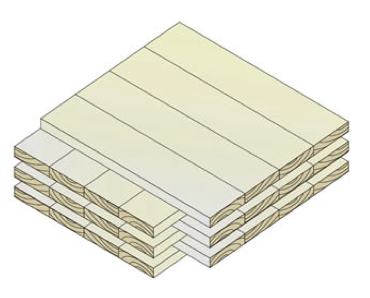 manufacturers normally publish characteristic properties for their panels – such as bending strength, shear strength, modulus of elasticity and panel stiffness – to assist Designers in specifying these products.
manufacturers normally publish characteristic properties for their panels – such as bending strength, shear strength, modulus of elasticity and panel stiffness – to assist Designers in specifying these products.
A Cross Laminated Timber Handbook has been published by FPInnovations in Canada as an introduction to CLT. This handbook can be downloaded for free here. The American Wood Council has a self-study guide on CLT that can be downloaded here.
As in all wood buildings, connection designs are critical to the success of this new type of building material. Simpson Strong-Tie offices in Europe have been instrumental in developing and supplying connectors and fasteners in the CLT market. Simpson Strong-Tie has developed many connectors specifically for the CLT market in Europe (Figure 3).
Those connectors are used to join the CLT floor panels to CLT wall panels and CLT wall panels to the concrete foundation (Figures 1 and 2).
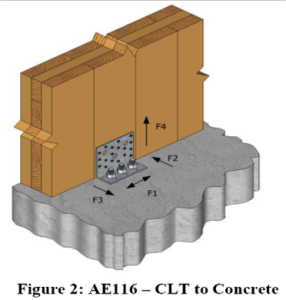 Specialized ring-shank nails and long metal screws have been developed as well. In mid-2014, Simpson Strong-Tie North America (Pleasanton, California Testing Facility) embarked on an initial test program to assess those connectors and fasteners developed for the CLT market by Simpson Strong-Tie Europe, using North American CLT panels to verify and quantify the performance characteristics according to North American testing protocols (American Society for Testing and Materials and Canadian Construction Materials Centre).
Specialized ring-shank nails and long metal screws have been developed as well. In mid-2014, Simpson Strong-Tie North America (Pleasanton, California Testing Facility) embarked on an initial test program to assess those connectors and fasteners developed for the CLT market by Simpson Strong-Tie Europe, using North American CLT panels to verify and quantify the performance characteristics according to North American testing protocols (American Society for Testing and Materials and Canadian Construction Materials Centre).
The initial test program used CLT panels fabricated in Western Canada using Canadian Spruce-Pine-Fir (S-P-F) lumber. The connectors and ring-shank nails were imported from the Simpson Strong-Tie European manufacturing facilities. Testing of the connectors also included the Simpson Strong-Tie Strong-Drive® SD screws, which as expected, provided higher load capacity than the ring-shank nails. A summary of the test program and the load rating developed for both the Canadian and the U.S. market can be downloaded here.
Other types of long countersunk screws such as the Strong-Drive® SDWS Timber screw (countersunk) or Strong-Drive SDWH Timber-Hex (hex head) screw (shown) are used either to splice the floor panels together or to drag the diaphragm loads back to the column or post as necessary.
As CLT continues to gain acceptance in North America, other connection details will also become more popular. Simpson Strong-Tie intends to continue developing and improving connection details to support this type of construction.
Building code acceptance is another important requirement and development that is in progress in both Canada and the U.S. In Canada, the 2014 edition of CSA O86 “Engineering Design in Wood” has reserved a section for CLT.
The 2015 edition of the International Building Code (IBC) recognized CLT when it is manufactured to the product standard. CLT walls and floors will be permitted in all types of combustible construction. The 2015 National Design Specification (NDS) for Wood Construction was recently published and approved as an ANSI American National Standard. The 2015 National Design Specification is also referenced in the 2015 IBC.
The future is here. Environmentally friendly mass timber (including CLT) is poised to grow in use, especially with the recognition of CLT in the building codes. North American manufacturing of CLT has been established and can only grow to support the expanding use of this new building material.
References:
https://fpinnovations.ca
*Images with permission from FPInnovations

